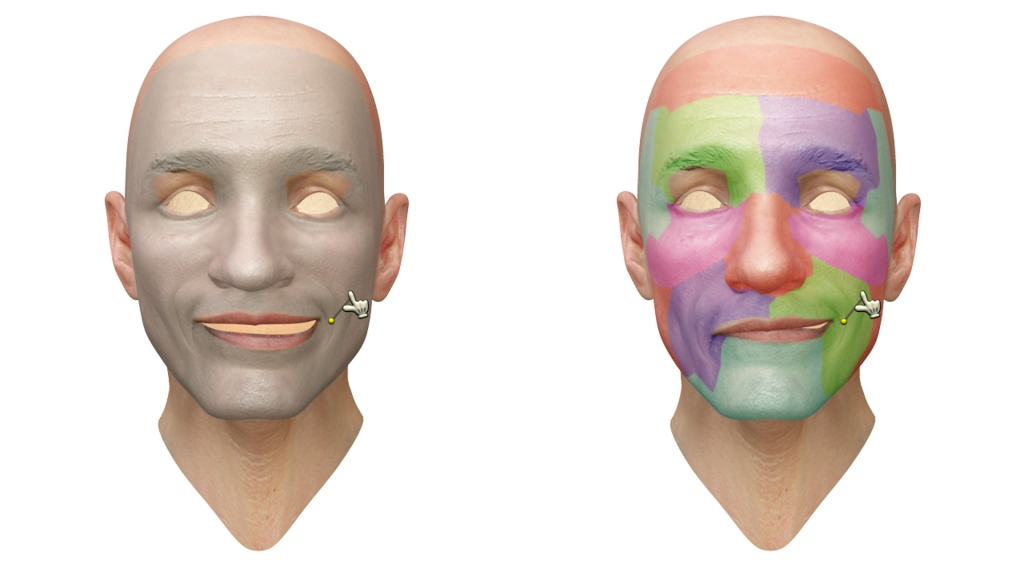Abstract

Linear models, particularly those based on principal component analysis (PCA), have been used successfully on a broad range of human face-related applications. Although PCA models achieve high compression, they have not been widely used for animation in a production environment because their bases lack a semantic interpretation. Their parameters are not an intuitive set for animators to work with. In this paper, we present a linear face modeling approach that generalizes to unseen data better than the traditional holistic approach while also allowing click-and-drag interaction for animation. Our model is composed of a collection of PCA sub-models that are independently trained but share boundaries. Boundary consistency and user-given constraints are enforced in a soft least mean squares sense to give flexibility to the model while maintaining coherence. Our results show that the region-based model generalizes better than its holistic counterpart when describing previously unseen motion capture data from multiple subjects. The decomposition of the face into several regions, which we determine automatically from training data, gives the user localized manipulation control. This feature allows to use the model for face posing and animation in an intuitive style.
Copyright Notice
The documents contained in these directories are included by the contributing authors as a means to ensure timely dissemination of scholarly and technical work on a non-commercial basis. Copyright and all rights therein are maintained by the authors or by other copyright holders, notwithstanding that they have offered their works here electronically. It is understood that all persons copying this information will adhere to the terms and constraints invoked by each author’s copyright. These works may not be reposted without the explicit permission of the copyright holder.